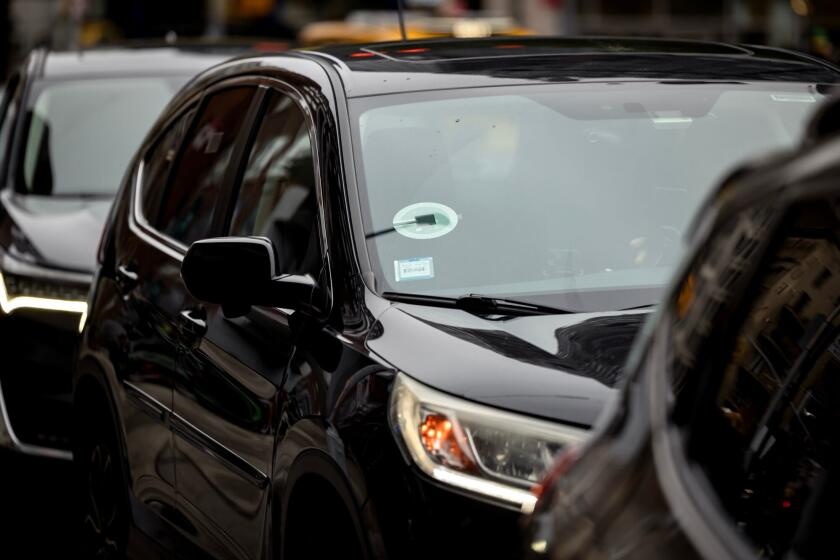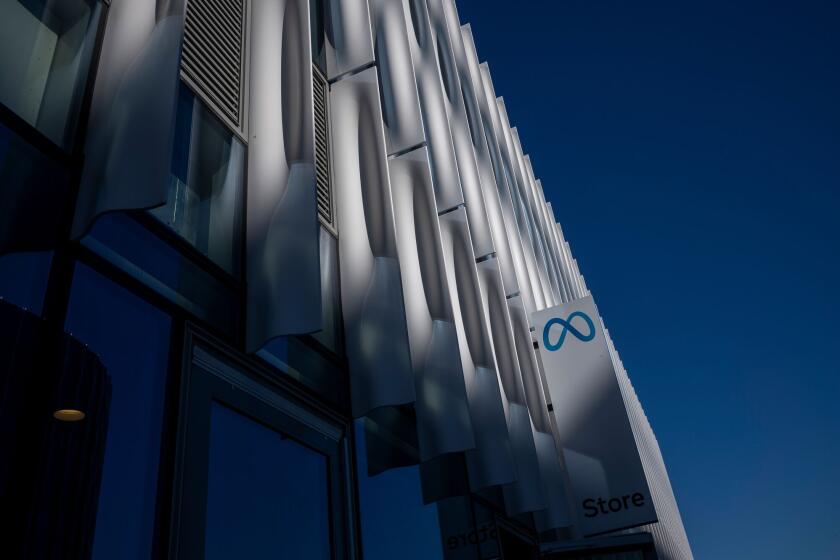Offers Expected if GM Tries to Sell Van Nuys Plant : Real estate: A transaction for the 100-acre site would probably be lengthy and could be further complicated if the land is contaminated.
- Share via
General Motors Corp. isn’t saying what it plans to do with its Van Nuys assembly plant after it stops producing cars there next summer. But if the auto maker tries to sell the 100-acre site, could it find a buyer?
With the beleaguered U.S. auto industry continuing to downsize, other American auto makers are out as potential buyers. And since the 44-year-old plant, with 2.2 million square feet of industrial space, is considered outmoded by today’s standards, it’s unlikely a Japanese car maker would be interested. Meanwhile, other local manufacturers such as Lockheed Corp. are moving operations out of the state.
What about turning the GM plant into a commercial real estate site? That market is in a slump and banks are shunning speculative office development. A big shopping mall? Not likely, say local developers, since it’s just as hard to get financing for retail developments. Besides, the neighborhood surrounding the Van Nuys Boulevard plant--with its liquor stores, fast-food stores, body shops and pool halls--would hardly turn the heads of executives at Nordstrom or Saks Fifth Avenue.
Nonetheless, local real estate professionals say there would be some buyers for the Van Nuys site if GM decides to sell. “Even in today’s marketplace, there are buyers,” said Encino commercial and industrial developer George Moss. “I’d say it’s a function of price.”
Many observers speculate that GM has probably already begun a low-key marketing effort on the property. According to Los Angeles tax records, the property was appraised last year at $61 million, but at current market values, the land alone is probably worth about $80 million, said Mike Howard, a Sherman Oaks-based industrial properties broker at Grubb & Ellis, a commercial real estate firm.
The process of selling the plant, however, is likely to be lengthy and could be further complicated if the land is found to be contaminated with gasoline, solvents or any other toxic substances that have been used at the plant.
Don Hinton, senior credit officer at Imperial Bank’s real estate division, said the GM plant might appeal to investors or large developers who have the financial strength to wait for the market to rebound. “There are not a lot of parcels of land that are located in heavily populated metropolitan areas that are available for development,” Hinton said. “There will come a time when that land is at a premium.”
Some real estate specialists suggest that GM might be willing to unload the site for a low price because it has owned the land since 1945. Indeed, after GM closed its South Gate plant in 1982, the auto maker sold the 90-acre site in 1985 to the city of South Gate for $12 million--less than half its then-appraised value of $32 million. The city then sold the property to a development group that subdivided the land and is building smaller industrial facilities there. Two 175,000-square-foot buildings are finished and fully leased.
Some local real estate observers suggest that a developer or a group of investors might buy the Van Nuys property and, similarly to South Gate, form a long-term plan involving tearing down the existing facility and constructing an industrial park with smaller buildings suited to different uses.
Another possible use envisioned for the property is development of one or more large warehouse-style discount stores such as Home Depot or Home Club--a segment of the retail market that is doing well despite the lackluster economy. Others suggest that the plant--which has railroad tracks leading to the property--might appeal to a big manufacturer for use as a warehouse or distribution center. Another suggestion is for the city to offer incentives to a manufacturer to retool the Van Nuys plant for production of rapid transit cars.
Councilman Joel Wachs, who represents Van Nuys, said it’s too soon to tell what role the city might play in finding another use for the Van Nuys property. But, he said, “it’s in the city’s interest to make sure something that goes in there will be positive for the city.” For example, he said, he is receptive to suggestions that the city try to interest an entertainment company in the site.
A big question mark, however, is whether the site is contaminated with toxic substances--a major issue in many real estate transactions today. Buyers of commercial property and their lenders routinely require testing for toxic contamination. If extensive contamination is found at the Van Nuys site, “it could sit around for an awfully long time,” said Seth Dudley, vice president and Encino branch manager of the real estate firm Julien J. Studley Inc.
When the South Gate plant was sold, for instance, some gasoline and solvents were found in underground water tables and a cleanup--paid for by GM--is still continuing, said Ruben Lopez, South Gate’s deputy director of redevelopment. Jona Goldrich, a Culver City-based developer and general partner of the South Gate development, said building on the property has gone more slowly than expected because of the cleanup and the recession.
The pending sales of two other large San Fernando Valley properties have also been complicated by concerns over toxics.
Lockheed Corp. has been trying to sell 200 of its 300 acres in Burbank, former site of the so-called “Skunk Works,” where the F-117A Stealth fighter was developed. The nearby Burbank Airport is considering whether to buy the land, but the Lockheed property and nearby ground water are contaminated with chemical solvents such as perchloroethylene (PCE) and trichloroethylene (TCE), both thought to cause cancer. Estimates for the cleanup tab range as high as $100 million.
Airport officials have said they won’t buy the Lockheed land if it’s not clean. Lockheed has said it intends to clean up the property, but so far it hasn’t elaborated on its plans.
Meanwhile, the Walt Disney Co. has entered escrow on the 38.5-acre site of the former Stroh’s brewery in Van Nuys. But the plant has been found to be heavily laden with cancer-causing asbestos and Disney has said it is evaluating the site before it decides whether to proceed with the purchase.
Richard Varenchik, a spokesman for the California Environmental Protection Agency’s Department of Toxic Substances Control in Burbank, said GM’s Van Nuys plant has had no major toxic violations to date, but he said there’s no way to know what might be discovered through the kind of extensive testing that would be done if the land were sold.
Even without any environmental snags, broker Howard said that if GM finds a buyer for the property the entitlement process would no doubt be a lengthy one involving a full environmental impact report and extensive reporting to the South Coast Air Quality Management District, which monitors air pollution in Los Angeles County. Other reports would have to be prepared for the city regarding the state of the infrastructure and any proposed improvements.
City planning officials would also review issues such as whether the density allowed on the property should be revised. Given the size of the property, any density or zoning changes proposed by a buyer would likely be subject to public hearings and would require approval by the City Council, said Chris Larkin, a city planner for Van Nuys.
“If there were a buyer who could step up tomorrow, they would be looking at two to three years before they lay a brick,” said Howard. “If something has to be cleaned up, it could go longer.”
More to Read
Inside the business of entertainment
The Wide Shot brings you news, analysis and insights on everything from streaming wars to production — and what it all means for the future.
You may occasionally receive promotional content from the Los Angeles Times.











